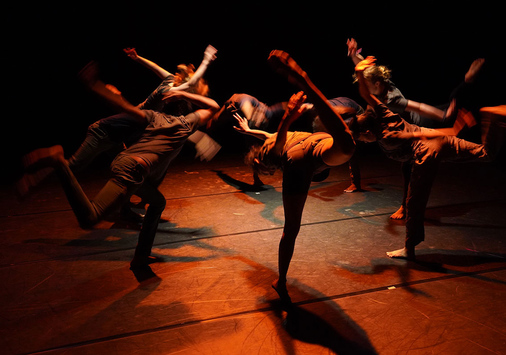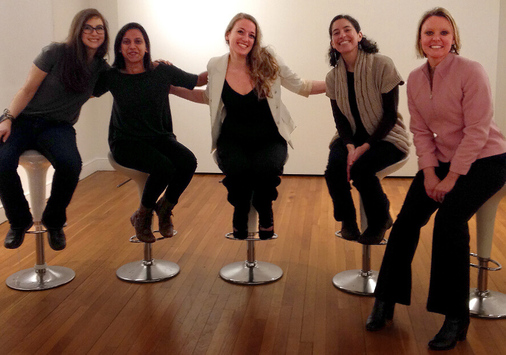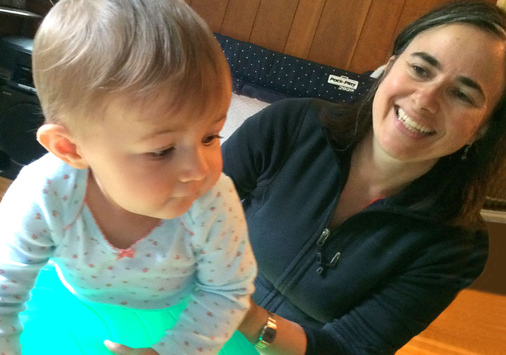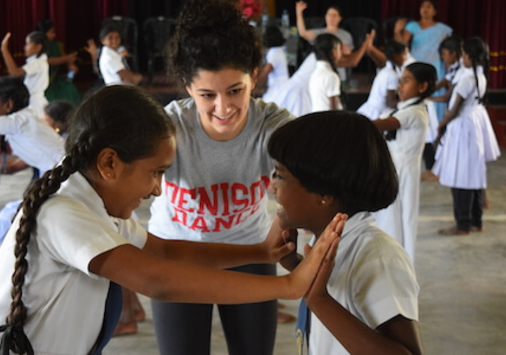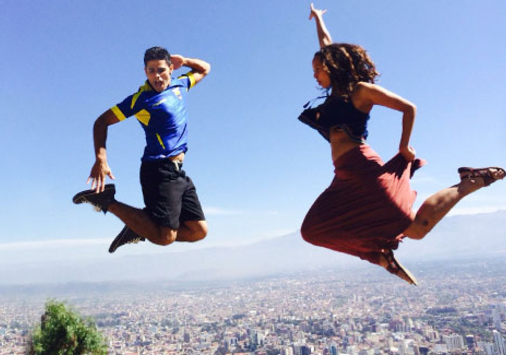Courses
2024 - 2025
For this academic year's course catalog, please visit our Academic Catalog site. For courses currently offered, please refer to the Schedule of Classes.
African/Diaspora Dance I focuses on African-centered forms of dance in one of many possible genres across the African Diaspora (e.g., traditional African forms, dances of the African Diaspora, African American vernacular, Hip-Hop, Contemporary African, etc.). Taught from a cultural perspective, this course emphasizes fundamentals such as fluidity, use of the head, spine and pelvis, grounded and weighted qualities, isolations and complex embodied rhythms. Concert attendance, short written critical responses and weekly written journals are examples of outside work that is required. No previous dance experience is expected.
Crosslisting: BLST 122.
Contemporary Dance I is intended for students with minimal or no formal dance training. This is a full-participation movement experience requiring a commitment to attend each class session. Students will develop increased self-awareness through sensitivity to movement dynamics, choreographic.
Dance as Art is open to students interested in dance as a performing art, a physical practice, and a field of embodied inquiry. It serves to introduce students to many of the disciplines, methodologies, and theoretical approaches within the field of dance. Students will engage with methods for viewing, analyzing, and discussing dance as a performing art—in both its formal and socio-cultural dimensions; will gain experience with dance as a movement practice; and will have the opportunity to generate their own choreography as a mode of aesthetic production and compositional reasoning. No previous dance experience is necessary. This course fulfills a Fine Arts general education requirement.
From time to time, according to the expertise of the faculty and the interest of the students, special courses that can address intensive study are arranged and offered. This course can be taken more than once for credit. Courses recently offered are African Hand Drum Ensemble, Yoga: Practice & Theory, and Foundations of Movement. Whether this course substitutes in the major or minor for an “area study,” and, if so, for which one, is determined by the Chair. Generally, these courses will fulfill a minor requirement.
A general category used only in the evaluation of transfer credit.
Seminar in Production focuses on many aspects of dance concert production. Topics covered include budgeting, marketing, graphic design, costume design/construction, lighting design for dance, box office and house management, video documentation, scheduling and backstage production. Professionals/faculty will guest lecture in the various subfields. Students will collaborate in the production of major department-sponsored events, working as technical crew for evening events. This course demands hands-on real-life learning. Limited readings are assigned. A portfolio of completed work is required.
African/Diaspora Dance II focuses on African-centered forms of dance in one of many possible genres across the African Diaspora.
Contemporary Dance II is intended for students with some formal dance training and expects students to be working at an intermediate level. This is a full-participation movement experience requiring a commitment to attend each class session. Students will develop and advance their self-awareness as movers through sensitivity to dynamics, choreographic phasing clear spatial intention, and articulate, expressive gestures. This class emphasizes clear bodily alignment movement efficiency and flow, whole- body connectivity, flexibility and strength; and the use of breath, momentum, and especially release into gravity to foster ease, expression, and delight in motion. Improvisation is used in partnership with instructor-taught, choreographed material. Attendance at Departmental concerts, short written responses, and 30-minutes of weekly self-directed studio time are required outside of class. Level II is open to students with previous dance experience in any genre. Students are encouraged to consult with the instructor prior to enrollment to determine their experience level.
Prerequisite(s): 100-level movement course(s).
This course frames dance as a complex political activity made public through various agendas of race, creed, national origin, sexuality, and gender. Students may simultaneously be exposed to poststructuralist epistemology, feminist theory, and power & justice ideologies while they are meeting a survey of historical works from a selected cultural context. In this way, the course is less about coming to know a canon of "masterworks" and more about learning how to interrogate dance in many cultures from multiple perspectives. Students will be expected to engage in movement activities as a method toward an embodied understanding of theory, but will not be evaluated on their movement performance or ability. No dance experience necessary. This course may be crosslisted depending on the specific course content.
This course focuses on the creation and presentation of assigned short movement studies that focus on principles of dance composition for the concert stage. Past focus has been on the relationship of movement to sound, interrogating the use of music in modern dance history. Through solo, duet and group forms students learn about the compositional elements of space, time, dynamics, flow and shape, discover their own unique movement style, become familiar with how the body works and how it can be expressive, and expand their own definitions of dance. Three fundamental aspects of creative work in movement will be emphasized: movement invention, compositional structure, and creating meaning. A desire to take risks and be transformed, a willingness to use the body as an expressive tool, an eagerness to learn, and willingness to question personal choices are essential for success in this class. An interest, ability and a desire to be physically challenged to work toward expressive clarity in movement, is assumed. This course will explore a range of different topics of choreographic investigation and may be taken more than once for credit. Prerequisite(s): DANC 122 or DANC 132 or consent of instructor.
From time to time, according to the expertise of the faculty and the interest of the students, special courses that can address intensive study are arranged and offered. This course can be taken more than once for credit. Courses recently offered are Modernism Re-Composed, Visual Art Making & Movement, Embodiment in/off through Writing and Freestyle & House Dance. Whether this course substitutes in the major or minor for an “area study,” and if so for which one, is determined by the Chair. Generally, these courses will fulfill a major or minor requirement.
A general category used only in the evaluation of transfer credit.
Contemporary Dance III is designed for students with significant experience in modern, postmodern, or contemporary dance training. This course provides the student with the rigorous training required for performance, demands an attitude that anticipates professionalism, and will continue to develop strength, flexibility, endurance, and sensitivity to gravity, momentum and phrasing. A willingness to think broadly about movement, to be open to new perspectives and possibilities and to take risks and be fully engaged without knowing exactly what you are doing will be essential and encouraged. This class will focus on process and will ask students to consider how they move and why. Students will be challenged to discover their own movement potential and methods for accomplishing physical tasks.
Prerequisite(s): One year or two semesters of DANC 232 or consent of instructor.
Individual pursuits in (1) composition/improvisation/choreography, (2) history/cultural studies/criticism, (3) somatics/systems of movement re-education, or (4) movement analysis/reconstruction, under the supervision of a faculty member. Only those students who have had the initial coursework in that pursuit may apply.
Individual pursuits in (1) composition/improvisation/choreography, (2) history/cultural studies/criticism, (3) somatics/systems of movement re-education, or (4) movement analysis/reconstruction, under supervision of a faculty member. Only those students who have had the initial coursework in that pursuit may apply.
Through various approaches to learning (memorizing factual information, sharing autoethnographic body-centered stories, drawing evocative and descriptive images, and moving through guided developmental movement explorations), students are introduced to anatomy and kinesiology in their own bodies. The course materials approach the body primarily from a first-person stance through different kinds of movement activities in relation to reflexes and developmental material through skeletal, muscular, and neurological systems. Students are required to keep weekly journals, work in small study groups in and out of class, and create and document a "personal practice" (sometimes referred to as a series of personal bodywork sessions) to illustrate their commitment to self-as-home, command of anatomical and kinesiological principles and reasoning, and the application of those processes on self-identified movement inquiries.
Students explore aspects of Effort, Shape, Space, and Body as defined in the Laban tradition. Materials focus on observing, analyzing, and recording any kind of human movement practice. All students should expect to create movement studies and to motif their work as part of this inquiry. Interest in creating and observing qualities of movement practice is essential. Dance experience is helpful, but not required.
This course functions like a performance course, reconstructing dance movement from a score for inclusion in a public performance. The 4-credit course is distinguished from a 2-credit performance course in that students will be responsible for the reconstruction of the choreography. The work can be performed publicly only with permission of the copyright holder of the dance. Students will meet for the standard 4 hours per week (56 contact hours) as well as be responsible 4 hours/week in rehearsal with other student dancers and work 4 hours/week on assignments. The standard commitment of 12 hours/week in and out-of-class may be "loaded" into Weeks #2-#12 of the semester, allowing the course to end before the semester concludes. Only offered occasionally.
From time to time, according to the expertise of the faculty and the interest of the students, special courses that can address intensive study will be arranged and offered. This course can be taken more than once for credit. Courses recently offered are Intro. to African American Theater, Dance Technique for Performance, Contact Improvisation. Whether this course substitutes in the major or minor for an "area study", and if so for which one, is determined by the Chair. Generally, these courses will fulfill a major or minor requirement.
A general category used only in the evaluation of transfer credit.
New and reconstructed works choreographed by faculty and guest artists in African/Diaspora dance are learned by students and rehearsed for public performance. Participation can include attending biweekly company classes and contributing to the production of the performance. Differences in course number refer to genres of performance work. By audition or invitation only. Auditions are typically held during the first two weeks of each semester or immediately preceding a short residency by a guest artist.
Crosslisting: BLST 422.
New and reconstructed works choreographed by faculty and guest artists in modern/postmodern dance are learned by students and rehearsed for public performance. Participation can include attending biweekly company classes and contributing to the production of performance. Differences in course number refer to genres of performance work. By audition or invitation only; auditions are typically held during the first two weeks of each semester or immediately preceding a short residency by a guest artist.
Participation as a cast member in the choreographic research process of new and reconstructed works in Modern/Postmodern forms created by students who have completed adequate choreographic studies coursework. Student participants learn and rehearse these student generated projects for public performance. The project is supervised by faculty. Enrollment is by audition or invitation only. Auditions are arranged by the student choreographer, often during the first two weeks of each semester.
This four-credit advanced-level studio course in Dance is a hybrid of technique class and rigorous ensemble laboratory for the development of an original piece of choreography by faculty and/or invited guests, created with collaborative input by dancers. The course is designed for students who want: a) to deepen their understanding and embodiment of intermediate-advanced and advanced Contemporary Dance technique, and b) to apply that learning and their evolving physical, expressive, and artistic expertise to participating in the creation and performance of a new dance work. This new work or works will be performed publicly during, or at the end of, the semester. The creative approach in this course emphasizes whole-self engagement—body, mind, and spirit—through a movement vocabulary characterized by spirals, flow, and articulate gesture. In the four-day per week format, dancers will delve into a focused dance practice that blends active movement learning and repetition, ensemble building, and body care for dancers. Outside work is minimal, however students are expected to schedule one-hour of solo or small group studio time to review, practice and advance their capacity to self-coach. Additionally, students will be expected to carve out time for 1-3 special weekend rehearsals with faculty and any designers or guests (costume, lighting, etc.) plus all required technical and dress rehearsals, and Department of Dance Fall or Spring Concert showtimes.
Prerequisite(s): DANC 122 or 132 or 222 or 232 or consent of instructor.
New and reconstructed works choreographed by faculty and guest artists in ballet are learned by students and rehearsed for public performance. Participation can include attending biweekly company classes and contributing to the production of the performance. Differences in course number refer to genres of performance work. By audition or invitation only; auditions are typically held during the first two weeks of each semester or immediately preceding a short residency by a guest artist.
Participation as a cast member in the choreographic research process of new and reconstructed works in Ballet forms created by students who have completed adequate choreographic studies coursework. Student participants learn and rehearse these student-generated projects for public performance. The project is supervised by faculty. Enrollment is by audition or invitation only. Auditions are arranged by the student choreographer, often during the first two weeks of each semester.
This course, offered every fall, is designed to address the research and methodological needs of all senior dance majors and those minors choosing to undertake independent research in this or another department. The integration of movement and analytical course work through the intensive examination of a specific interest is the foundation for the senior dance major's own research. This investigation includes methodologies from books like Researching Dance by Hanstein and Fraleigh and Contemporary Choreography by Butterworth and Wildschut. This investigation, serving as preparation for DANC 452, is closely guided by the faculty. All students in the course conclude by writing a substantial prospectus or grant proposal including a focused artist or research statement and review of the relevant literature. All majors are required to take both semesters of Senior Research (DANC 451 and 452).
This course, offered every spring, is required of all dance majors. This course focuses on the completion of a senior research project and integrates movement and analytical course work through the intensive examination of a specific interest. This course is the foundation for the senior dance major's own research. During the course of the semester's work, each student will write up a significant dance research experiment, produce several excerpts of historical works in concert, create and produce an original choreographic work, or comment on a period in dance's history or a sociological movement in dance, or the like. The resultant document/performance will be presented publicly for an identified audience in partial fulfillment of the degree requirements. Open to dance majors only.
Prerequisite(s): DANC 451.




